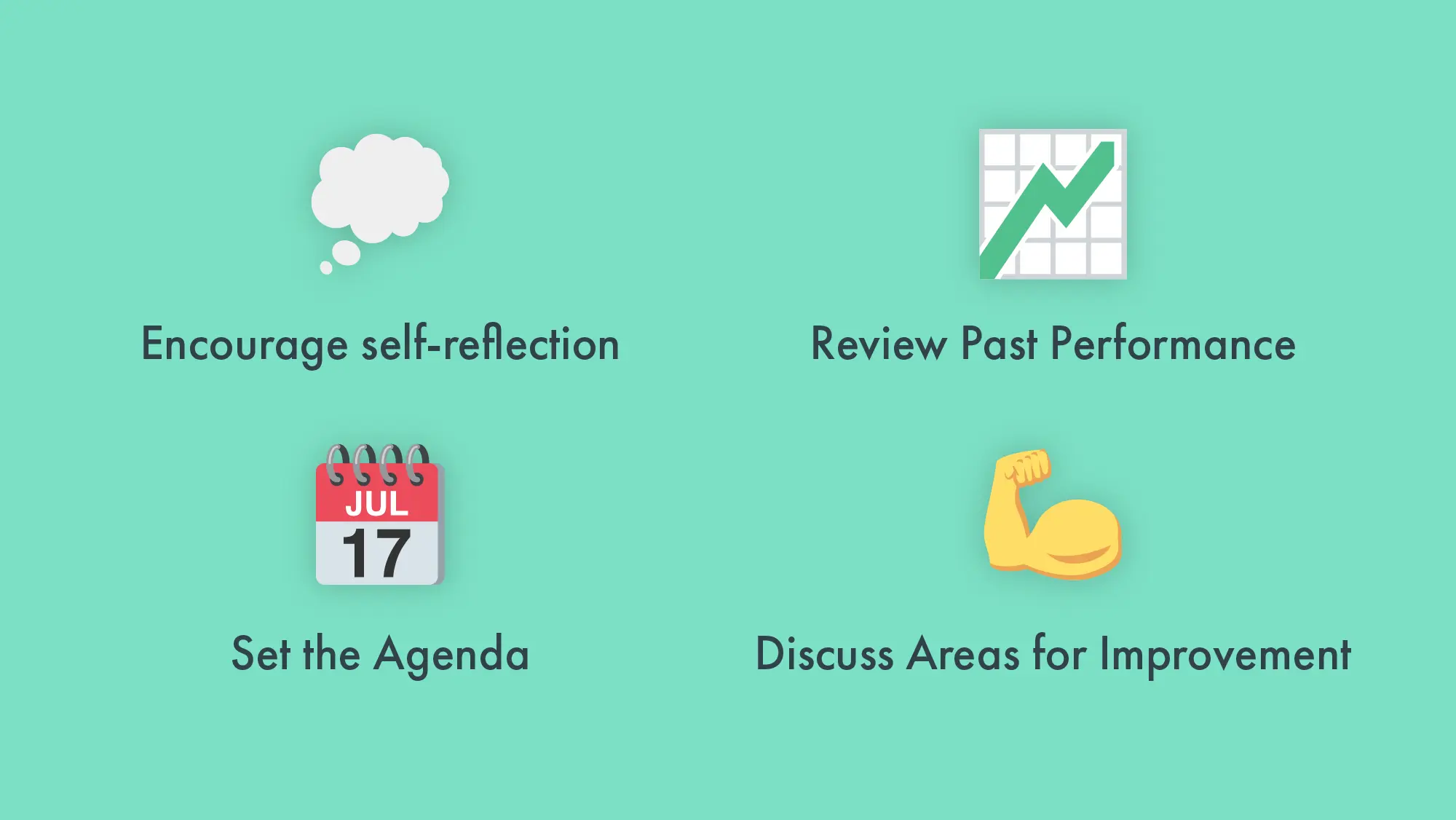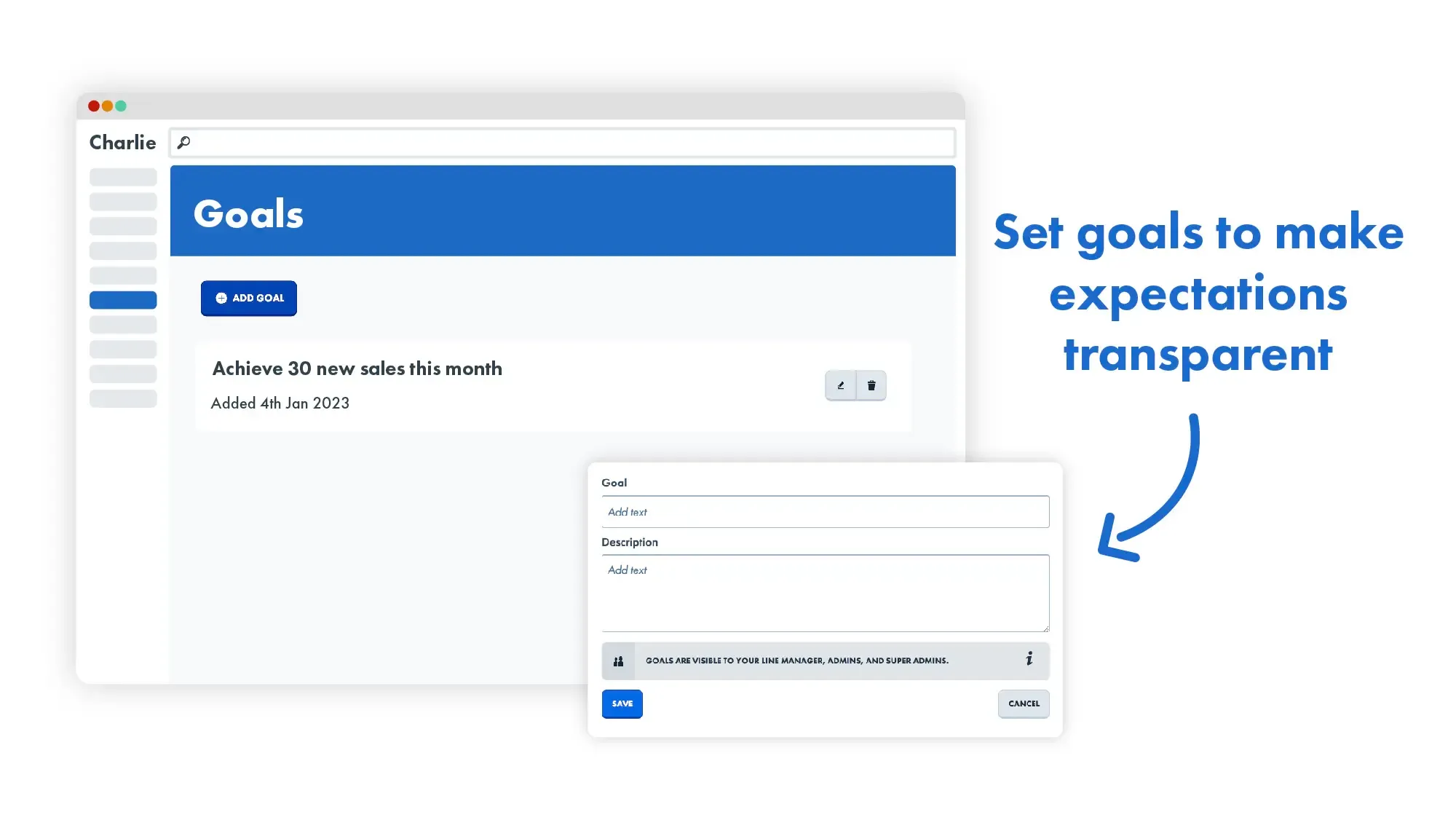Performance reviews: how to get them right

Performance reviews are almost universally disliked by everyone. Even just hearing the words “performance review” is a nerve-wracking sensation for an employee that makes their hair stand on end.
As with many things, there’s a wrong way to do a performance management review and a right way. They can either be a bad experience that leaves both parties resentful and grows mutual animosity or distrust, or they can be opportunities for insight and potential growth. Your job as an HR professional is that performance reviews are the latter, more often than not.
What makes a good performance review? How do you prepare for the performance review process, and what's a good way to follow up with the employee being reviewed after? This post will answer these performance review questions and teach you how to conduct a proper review meeting.
What is a performance review?
A performance management review is a formal meeting between a line manager and an employee to assess their current performance at their job.
It's a process that's run yearly, quarterly or at a different cadence depending on where you work – it's a super important part of the overall performance management process to overview the employee's growth and development.
Why performance reviews are important
The best way to think about what a performance review cycle is like of a two-way conversation, not a set of criticisms that come down from above.
If running a business is like steering a ship out on the open sea, then the performance review process is like plotting your course or setting your compass. It helps ensure that the employee has a future at your organisation and that your organisation is still providing them with a path for growth.
A good performance review structure fulfils this by accomplishing several things:
- Employee Development: The best way to attract talent is to nurture it. If you want the best and the brightest to stick around, give them a reason to stay. Performance reviews can establish clear, measurable employee goals and constructive feedback for their career development
- Two-Way Conversation: Performance reviews can create a foundation of mutual trust and respect. Don’t just make demands of the employee, listen to what they have to say. To use the ship analogy again, a good captain listens to their crew
- Legal Protection: Less pleasant but no less important - monthly or quarterly performance reviews also help cover your bases and protect the organization from potential wrongful termination disputes
- Career Planning: Employees are people with their own agency and with their own dreams and goals. Performance reviews can help identify areas for lateral skill training, which develops the employee’s skill set, and in term enables them to create more value for your business
What are the five stages of a performance review?
You can visualise how to run a monthly performance review similarly to preparing for an interview, in that it requires proper preparation on both sides so that you and the employee being reviewed can make the most out of the time you have.
Here’s what you can do to help make sure the performance review goes smoothly and is as effective as possible:
- Set the Agenda: Having clear expectations for what you’d like both you and the employee to gain from the performance review will help make sure it’s a positive experience for all concerned. Outline the topics you want to discuss during the interview so that the employee knows what they’re getting into when they walk into the room
- Encourage self-reflection: Before sharing any feedback yourself, ask your team members to self-evaluate. How do they feel they’ve performed in the last quarter? What have they been most proud of achieving? Is there anything they wish they had made more progress on?
- Review Past Performance: Performance review cycles should move in one direction: forward. Dive into the employee’s work records, examine the goals and KPIs that were set in previous performance reviews, and how their performance measures up in comparison
- Discuss Areas of Improvement: Performance reviews aren't all sprinkles and sugar of course. Every employee has room to grow and areas they can improve upon. One of the main objectives of a performance review is to identify those areas and make a plan of action to fulfil those gaps – and if you want to address the issues of underperforming employees, don't wait up until performance reviews are rolled out. Do it way before. More info in our guide.
- Prepare the right performance review questions so you don't run out during the session

A simple way to streamline these tasks is to use performance review software like CharlieHR. With Charlie, you can automate the feedback exchange process between team members and direct reports, saving you tons of time and repetitive admin.
Conducting an effective performance review
Now it’s time for the big day. The employee is likely to be nervous and on edge, the same way you might feel if you were an ant under a microscope or a butterfly pinned to a corkboard.
However, your review meeting should be a way to help team members in their professional growth.
Therefore, remember to treat your employee performance review similarly to your other one-on-one meetings: this isn’t an interrogation or a trial, but a two-way conversation.
Before jumping in a performance conversation, make sure you have an action plan:
- Ask your direct report to send you their self-assessment notes
- Have your employee performance evaluation notes ready
- Share the agenda with your team member ahead of the meeting, if possible, to give them an idea of the talking points you’re going to go through.
Once you’re ready, this is what your performance review structure is going to look like:
Step 1 - Assessing performance
Once the pleasantries are out of the way, you can get right into the heart of the review by discussing their performance. Refer back to previous performance reviews, feedback and data. Be as objective as possible, and consider using a STAR (Situation, Task, Action, Result) framework to structure the feedback. It will help to keep the performance review grounded in actionable insight and plans for change.
Step 2 - Recognising success
Give credit where credit is due. Most employees are going to be fearful of you grilling them. That’s not a way to bring across a message. If anything, the performance review is a good place to give high performers credit for their achievements and success in their role.
Did they go the extra mile on an important project? Now’s the time to tell them. Did they ace that client meeting, or close that high-ticket sale? Better let them know. A little bit goes a long way when it comes to positive reinforcement. Everyone likes to be seen and acknowledged for good work.
Use the performance appraisal process as one of the key steps to acknowledge success and reward your employees, maybe with a promotion or a pay rise.
Step 3 - Setting goals, expectations and areas for improvement
Here comes the hard part - the part where you have to tell the employee what they need to do better.
It doesn’t necessarily have to be a negative experience, however. Even this part of the interview - the difficult part - can be a learning opportunity (and a good way to have a look at how you're using L&D at your business).
Begin by acknowledging their hard work and achievements, then provide clear, realistic, specific, and time-bound goals in your performance review to be achieved within a certain time frame by moving key metrics. In other words, set goals that are SMART (Specific, Measurable, Achievable, Relevant, Time-bound). Remember at all times, that this performance review is a two-way street, not your way or the highway. Encourage them to share their thoughts, be real with you, and be willing to reach a compromise.
If you use HR software like CharlieHR, you can easily set goals for your team members to then be able to check progress at each performance review cycle.

You should also think about creating a personal development plan for each of your team members so they have a clear direction of where they need to go.
What do employees and managers get out of the performance review meeting?
There are several aspects that come into play and should be the final result of what employees and managers can get out of a performance review meeting.
Ultimately, you should think about having the following answers when the meeting is over:
- How the employee is performing
- Where they could improve
- How their manager can support them
- Whether they have any feedback from their managers
- What are the next actions they need to take
- How they're performing against the company's goals
Following up after a performance review
The hard part is over. Now, with goals and expectations put in place, you can help set your employee and teammate up for success, so the following performance appraisal is even better. A performance review isn’t a one-and-done interview, but an ongoing conversation and an iterative process.
Here’s how you can help make the next performance review go even better.
Document the review
First thing first, document the conversation so you can refer back to your discussion during subsequent meetings. That way, there is no ambiguity about what the expectations were when you revisit the conversation again.
You may consider using performance management software like Charlie to store all your review conversations in one place.
Regular check-ins
The performance review cycle builds off of what was discussed before and keeps both your teammate and your organization moving forward, and growing together. Have regular check-ins to ensure progress is being made, and in the right direction.
Encourage open communication
Encourage your team members and employees to share their thoughts or opinions both in and out of the review process. Keep your ear on the ground, and find ways to enable your team to be better at their jobs. This is your opportunity to be a leader, not just a boss.
You can even help it by running 360-degree performance reviews.
4 dont's for your performance review process
As a manager, you should be very careful as to how you run a performance process. To do this, you need to have extremely polished communication skills. It can sometimes be difficult to strike the right balance between firm and friendly.
To help you do that, here are the five ultimate don'ts you should avoid when speaking to your employees:
- Rush the performance review – you should always take the time to listen to your team member and dig deeper into what you may think is an issue, so allocate a timeslot that you know you can commit to run your review.
- Avoid difficult conversation – feedback can be a very difficult task, and you'll sometimes have to tell your employees things they don't necessarily want to hear. You have to keep in mind that hiding it will impact their growth and that a healthy working relationship needs to be an honest one.
- Blame an issue solely onto the team member – it's great to acknowledge that the team member has made a mistake and let them know, but you should never use that occasion to blame them 100% for it. Instead, look at how you can constructively build processes so it doesn't happen again.
- Compare them with other team members – the performance review should only focus on the employee. Under no circumstances should you bring up other employees into the conversation.
Streamline your performance reviews with CharlieHR
Performance reviews are a part of any working environment — but they don’t necessarily have to be nerve-wracking or a slog. You can streamline the process by using HR automation tools.
Manually creating, documenting, scheduling, and optimising your performance review process is a lot of work, even for experienced HR professionals.
If you want to make your performance review process as quick and painless as possible, then make use of CharlieHR’s reviews feature. You can automate recurring tasks using customisable templates (such as a 360 degree review template) and a simple review builder setup to launch employee performance reviews with minimal effort.
Start a free trial of Charlie and turn a potentially scary, gruelling, and hard performance review experience into one that helps your entire organisation grow.

Want to find out more about performance management? Simply look at our resources:


